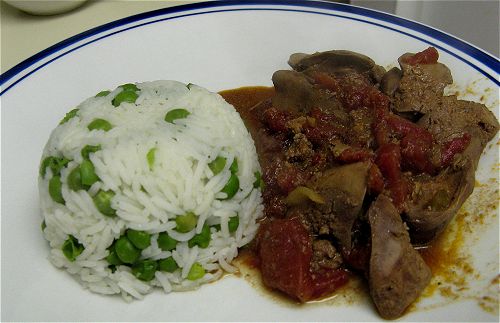Introduction
It seems that a number of Vimeo.com users are confused about aspect ratios and how to eliminate jaggies, so I put together this tutorial for you. With this guide, you will be able to export a clip from any miniDV camera in DVD high quality, that will get the “HD treatment” on Vimeo, without your footage having to be HD. Here’s a sample of the quality you will get from your miniDV PAL/NTSC non-HD camera if you export the right way for Vimeo.
Please note however, that this “high quality” re-encoding for non-HD footage feature might disappear from Vimeo in the future (your existing videos should be unaffected if that’s the case though). [UPDATE: As of March 14 2008, this feature is removed by Vimeo — bummer] Regardless, that’s the correct way of exporting widescreen miniDV footage for the web/devices in full quality, so it’s good to know anyway.
Method
1. Make sure you set up your camera to shoot in widescreen. The “high quality” re-encoding at Vimeo is only possible for widescreen miniDV footage.
2. Import your footage to your PC with the video editor of your choice. You can now choose to either edit the footage, or just use a single unedited scene in which case go to step #3. If you choose to edit the footage first, make sure you export from your video editor in .avi DV widescreen interlaced mode, so quality loss remains minimal. Most video editors support exporting back to the same DV codec, and if not, use another intermediate lossless codec to export.
3. Download and install SUPER (it’s a bit difficult to spot the actual download link on this guy’s messy web page, but look around –alternative download server here). Once loaded, right click on the SUPER window and select “Output File Saving Management” and instruct the application to export to a folder that you can find back easily (e.g. your Desktop).
4. Then, make everything look *exactly* like this (make sure that NOTHING is selected in the “Aspect” radio boxes). Then, drag’n’drop the .avi file on SUPER and press “Encode”.
4a. *IF* your camera is a PAL 16:9 camera, you can try exporting in 1280×720 at around 5000 kbps bitrate instead of the 880×480, ~3000kbps suggestions above. But that’s only if you shot in widescreen PAL. Resizing to 720p an NTSC widescreen or a PAL/NTSC 4:3 signal is not a good idea.
5. That’s it, after a while (depending on the speed of your PC), you will have an .mp4 file, ready to be uploaded to Vimeo. When it’s up, it should have the “HD treatment” and look all fabulous.
Some important notes
* This kind of export will create DVD-quality files that are playable as-is on the XBoX360 and Sony PS3! It should be playable on the AppleTV too, but I don’t have one to test.
* If you are proficient in using your video editor’s exporting dialogs with similar settings we used here, then there’s no reason to use SUPER. However, most people can’t do that, which why I wrote this tutorial, using a single utility for all cases. If you feel adventurous though, or if you are using a Mac, you can follow my other, HD, tutorials here and follow them exactly, except for 2-3 changes you will have to do to reflect your non-HD source footage: 880×480 size instead of 1280×720, 3 mbps instead of 5mbps of bitrate, and the right frame rate each time (29.97 for NTSC, 25 for PAL).
* I suggested the same exporting resolution (880×480) for both PAL and NTSC miniDV footage. In reality, widescreen PAL can go up to 1048×576, but that’s quite some over-stretching over the original 720×576 recorded frame size and so a resize down to 880×480 can be beneficial in terms of quality (besides, you still get the “HD treatment”).
* For those who are confused why we don’t export at 720×480 (NTSC) or 720×576 (PAL), it’s because in order to get widescreen in these resolutions, you have to set the “16:9 flag” in the internal format of these videos. Problem is, Vimeo and many other players usually don’t respect these flags, and so your videos come out as 4:3. In order to go around this limitation, we export in aspect ratio 1.0000 (instead of 1.2121 for NTSC and 1.4568 for PAL), and so the 880×480 resolution is based on that aspect ratio. It’s ok if you don’t understand what I am talking about here, just trust the results.
* If you do not own a widescreen DV camera, in order to export with the right 4:3 aspect ratio you need to do the following: export at 768×576 for PAL, or at 656×480 for NTSC (at 2000+ mbps instead of 3024 shown in the SUPER screenshot). You won’t get the HD treatment at these 4:3 resolutions, but these are the right aspect ratio 1.000 resolutions you should be exporting for web usage from 4:3 miniDV.



